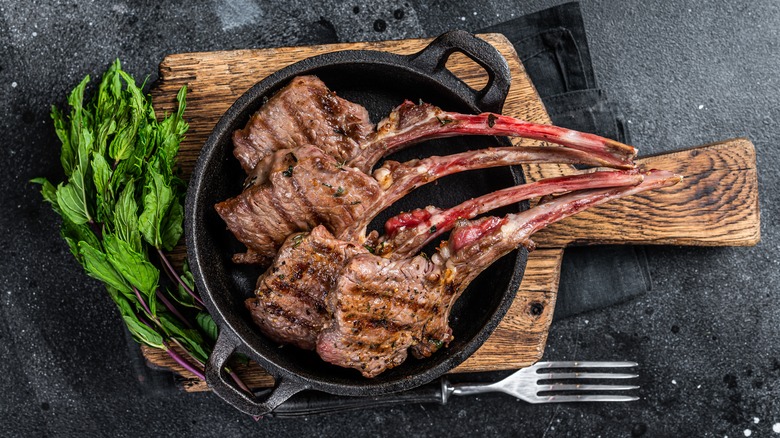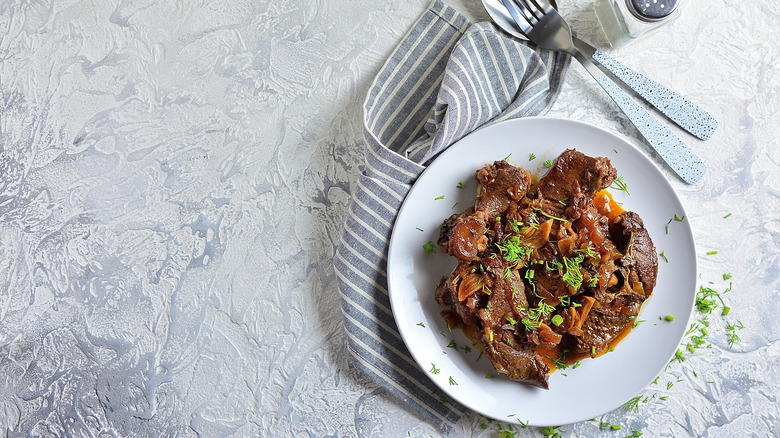The Ideal Type Of Cooking Method For Incredibly Tender Mutton
Both lamb and mutton refer to meat butchered from a sheep. Lamb is widely understood to refer to meat slaughtered from a young sheep — presumably under one year of age. Mutton generally refers to meat from sheep between two and three years of age at slaughter. In many countries, sheep slaughtered between ages one and two are classified into their own category, including sheep, yearling, and hogget, depending on the country.
In the U.S., however, lamb tends to refer to all meat sourced from sheep slaughtered before age two. Accordingly, some of the lamb consumed in the U.S., especially that which is available from larger supermarket chains, might be considered "mutton" elsewhere. The distinction matters because the younger the sheep, the more tender and milder its meat. That's not to say mutton doesn't have its charms, including, presumably, a lower price point.
Moreover, some people just love mutton for its richer, fattier, denser taste and texture. For those who don't want to pay steakhouse prices for a plate of mutton chops, it's possible to make great mutton at home. You just have to know a few tricks. The first is to marinate your mutton in milk for a few hours overnight, to make its scent less gamey. Adding an acid such as lemon or vinegar can tenderize mutton because the acid works to break down the muscle fibers and connective tissue. But for incredibly tender mutton, the type of cooking method you choose is essential.
For tender mutton, opt for moist, slow, and low
Mutton, like most mature meat, tends to contain a high proportion of collagen, a rubbery connective tissue that holds the meat fibers together. Although some collagen is important to maintaining meat's structure, higher amounts tend to render meat tough and chewy. Accordingly, the key to yielding incredibly tender mutton is finding ways to break down the excess collagen without destroying the meat's structural integrity.
As noted above, marinating mutton in an acidic liquid is a good start, but in terms of an ideal type of cooking method, nothing helps break down collagen fibers in mutton and other mature meat like slow cooking at a low temperature in moist heat. The reason is that moist heat dissolves collagen, thus allowing the meat fibers to loosen — leading to a more tender texture. But at higher temperatures, meat fibers tend to contract, which would tend to undermine the tenderizing process.
Examples of low, slow, and moist cooking methods include stewing and braising, both of which refer to simmering in liquid (broth or stock) after an initial pan-sear — although the pan-sear is more about flavor than texture. The main difference is that stewing involves smaller cuts of meat, while braising involves larger, if not whole cuts. A less well-known but no less effective method is sous vide, involving a vacuum-sealed bag immersed in water set to the precise temperature of the desired finished product, followed by an optional pan-sear.

